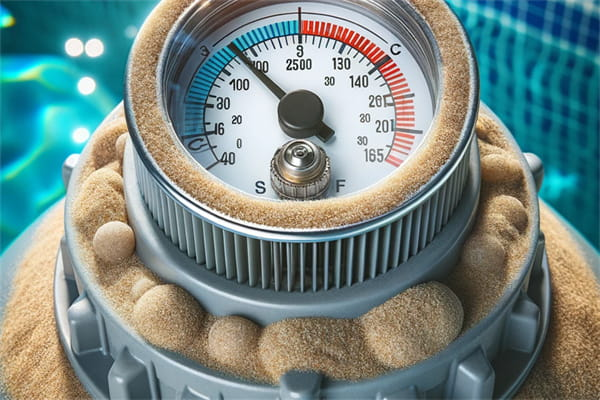Your pool sand filter plays a crucial role in keeping your pool water clean and safe. Over time, the sand in the filter can become less effective, leading to various issues. But how do you know when it’s time to replace the sand? Here are seven signs that your pool sand filter needs a sand replacement.
1. Decreased Water Flow
One of the first signs that your pool sand filter needs a sand replacement is decreased water flow. If you notice that the water flow is significantly reduced, it could be due to the sand in the filter becoming clogged with debris. As the sand collects dirt and particles, it can become compacted, reducing the efficiency of the filter. This can lead to lower water flow and less effective filtration.
Solution: If you experience decreased water flow, check the sand in your filter. If it appears dirty or compacted, it’s time to replace it. Replacing the sand will restore proper water flow and improve the filter’s efficiency.

2. Reduced Filtration Efficiency
Another sign that your pool sand filter needs a sand replacement is reduced filtration efficiency. If your pool water looks cloudy or is not as clear as it used to be, the sand in your filter may no longer be doing its job effectively. Over time, the sand can become worn out and lose its ability to trap and filter out debris.
Solution: Inspect the sand for signs of wear and tear. If it feels smooth rather than gritty, it has likely lost its effectiveness. Replacing the sand will help ensure that your pool water remains clear and clean.
3. Increased Water Pressure
High water pressure is another indicator that your pool sand filter may need a sand replacement. If the pressure gauge on your filter shows a higher-than-normal reading, it could be because the sand is clogged with debris, making it harder for water to pass through.
Solution: Regularly monitor the pressure gauge on your filter. If the pressure is consistently high, it’s a good idea to check the sand. Replacing the clogged sand will help reduce the pressure and improve filtration efficiency.

4. Frequent Backwashing
If you find yourself needing to backwash your filter more frequently than usual, it could be a sign that the sand is no longer effective. Backwashing is necessary to clean the sand, but if it becomes too frequent, it indicates that the sand is getting clogged too quickly and can no longer filter the water efficiently.
Solution: If backwashing becomes a frequent task, consider replacing the sand in your filter. New sand will improve the filter’s performance and reduce the need for frequent maintenance.
5. Sand in the Pool
Finding sand in your pool is a clear sign that something is wrong with your pool sand filter. This can happen if the sand becomes too fine over time or if there is damage to the filter’s internal components, allowing sand to escape into the pool.
Solution: Inspect the filter for any damaged parts and replace them if necessary. Additionally, if the sand has become too fine, replace it with new, properly sized sand to prevent it from leaking into the pool.
6. Lifespan of the Sand
The lifespan of the sand in a pool filter is typically between 3 to 5 years. Even if you don’t notice any specific issues, it’s a good idea to replace the sand once it reaches the end of its expected lifespan. Over time, the sand will become less effective at filtering out debris, even if it doesn’t show obvious signs of wear.
Solution: Keep track of when the sand was last replaced. If it has been more than 3 to 5 years, it’s time to replace it, regardless of whether you notice any performance issues.
7. Unpleasant Odors
If you notice unpleasant odors coming from your pool filter, it could be a sign that the sand is harboring bacteria and organic matter. This can happen if the sand has not been cleaned properly or has been used for too long.
Solution: Inspect the sand for any signs of mold or organic buildup. If the sand appears dirty or smells bad, it’s time to replace it. New sand will help eliminate odors and improve the overall cleanliness of your pool.
Conclusion
In conclusion, keeping an eye on the performance of your pool sand filter is essential for maintaining clean and safe pool water. By recognizing these seven signs—decreased water flow, reduced filtration efficiency, increased water pressure, frequent backwashing, sand in the pool, the lifespan of the sand, and unpleasant odors—you can ensure that your pool sand filter continues to function effectively. Regular maintenance and timely sand replacement will keep your pool in top condition, providing a safe and enjoyable swimming environment.